Shooting in a Different Flash Mode for Each Group
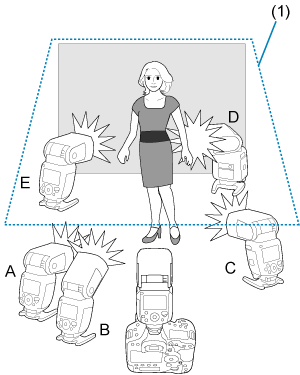
(1) Ceiling
When using an EOS DIGITAL camera released in and after 2012, you can shoot in a different flash mode set for each firing group with up to 5 groups (A, B, C, D, and E).
The flash modes that can be set are (1) E-TTL II / E-TTL autoflash, (2) manual flash, and (3) auto external flash metering. When the flash mode is (1) or (3), exposure is controlled to result in standard exposure for the main subject as a single group.
This function is for advanced users who are very knowledgeable and experienced in lighting.
-
Use the joystick on the sender to select
.
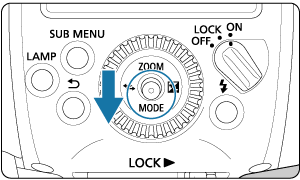
-
Set the flash mode to
.
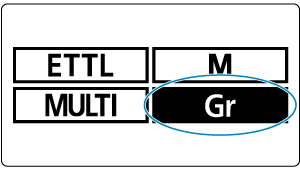
- Press the joystick up, down, left, or right, or turn
and select
, then press the joystick vertically.
- The receiver unit's flash mode is set automatically during shooting, controlled by the sender unit.
- Press the joystick up, down, left, or right, or turn
-
Set the firing group of the receiver unit.
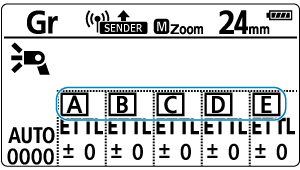
- Set the firing group (A, B, C, D, or E) for all the receiver units.
-
Set each firing group.
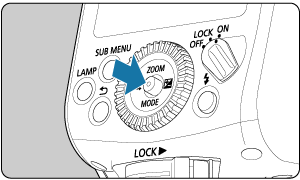
- Set the flash mode of each firing group by operating the sender unit.
- Push the joystick vertically.
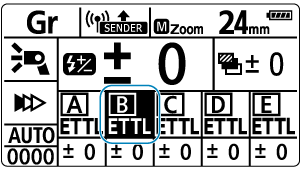
- Push the joystick up / down / left / right or turn
to select a firing group, then push the joystick vertically.
Setting the flash mode
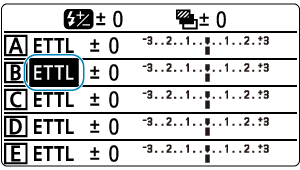
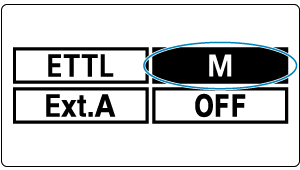
- Push the joystick up / down / left / right or turn
to select the flash mode from
.
Setting the flash output and flash exposure compensation amount
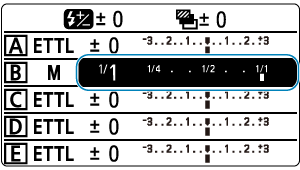
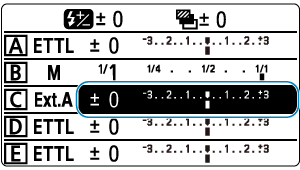
- Push the joystick up / down / left / right or turn
to select an item, and push the joystick vertically.
- Push the joystick to the left or right or turn
to set the flash output or flash exposure compensation amount, then push the joystick vertically.
- When using the
mode, set the flash output. When using
mode, set the flash exposure compensation amount as required.
- Repeat step 3 to set the firing function for all firing groups.
-
Check the charge status and then shoot.
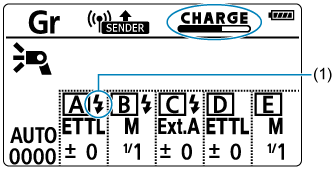
- When
is displayed, you can check the firing groups that are not fully charged by the indication on the screen on the left. For example, when firing group
is fully charged, (1) is displayed.
- When all firing groups are fully charged,
disappears.
- See Step 7 in "Automatic Flash Photography with 1 Flash Receiver" for other charge confirmations.
- Each receiver unit fires simultaneously in the respective flash mode set.
- When
Caution
- When setting the flash mode to
, make sure the receiver units are Speedlites supporting auto external flash metering. Firing in this flash mode is not possible if auto external flash metering is not supported.
- When the flash mode is set to
, exposure is controlled as a single group to obtain the standard exposure for the main subject.
Note
- For
, see the Instruction Manual of the Speedlite that supports Auto external flash metering.
- The order of firing among firing groups does not need to be consecutive; for example, A, C, E can be set.
- If there is a group that you do not wish to fire, set it to
when setting the flash mode in Step 3.